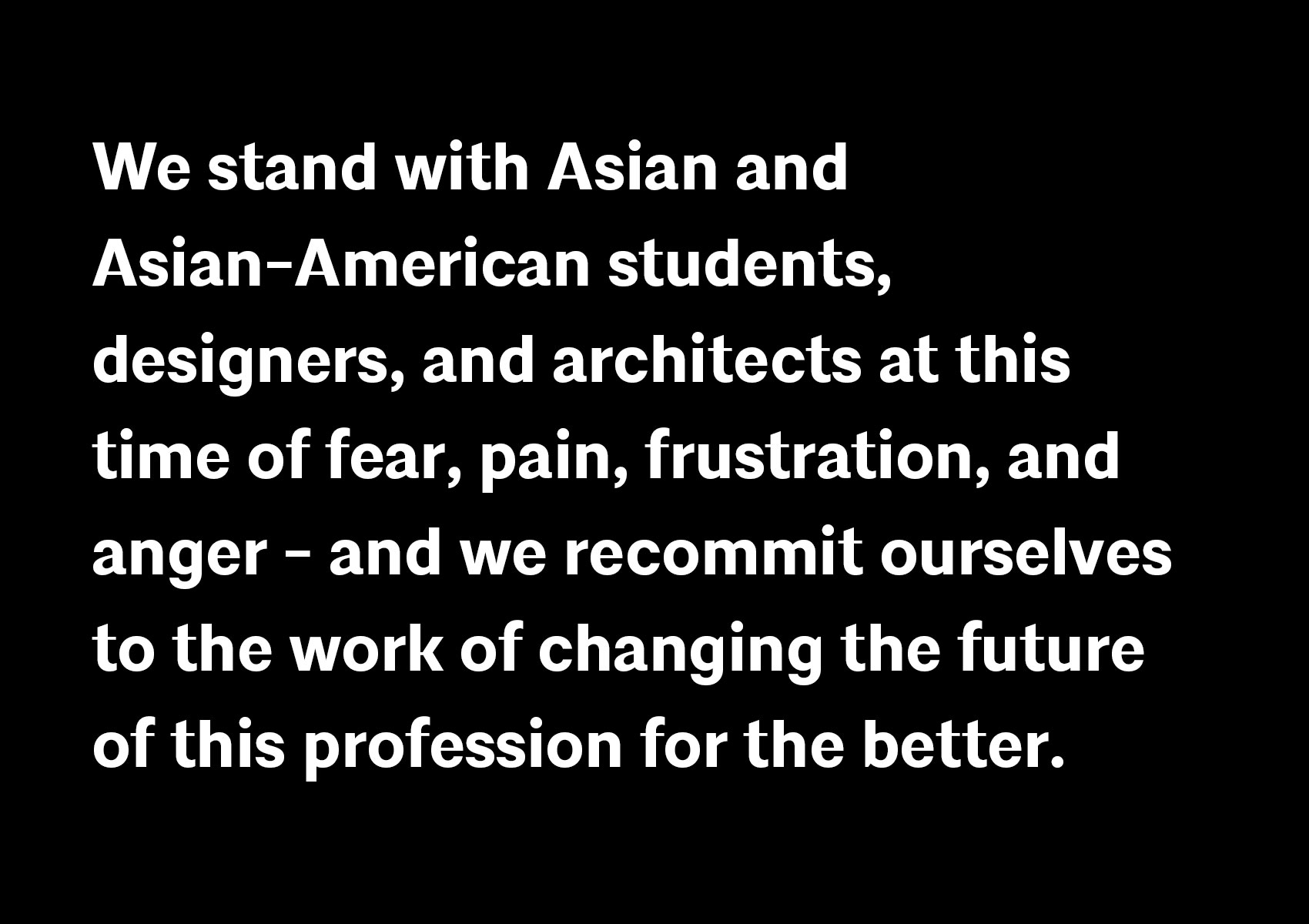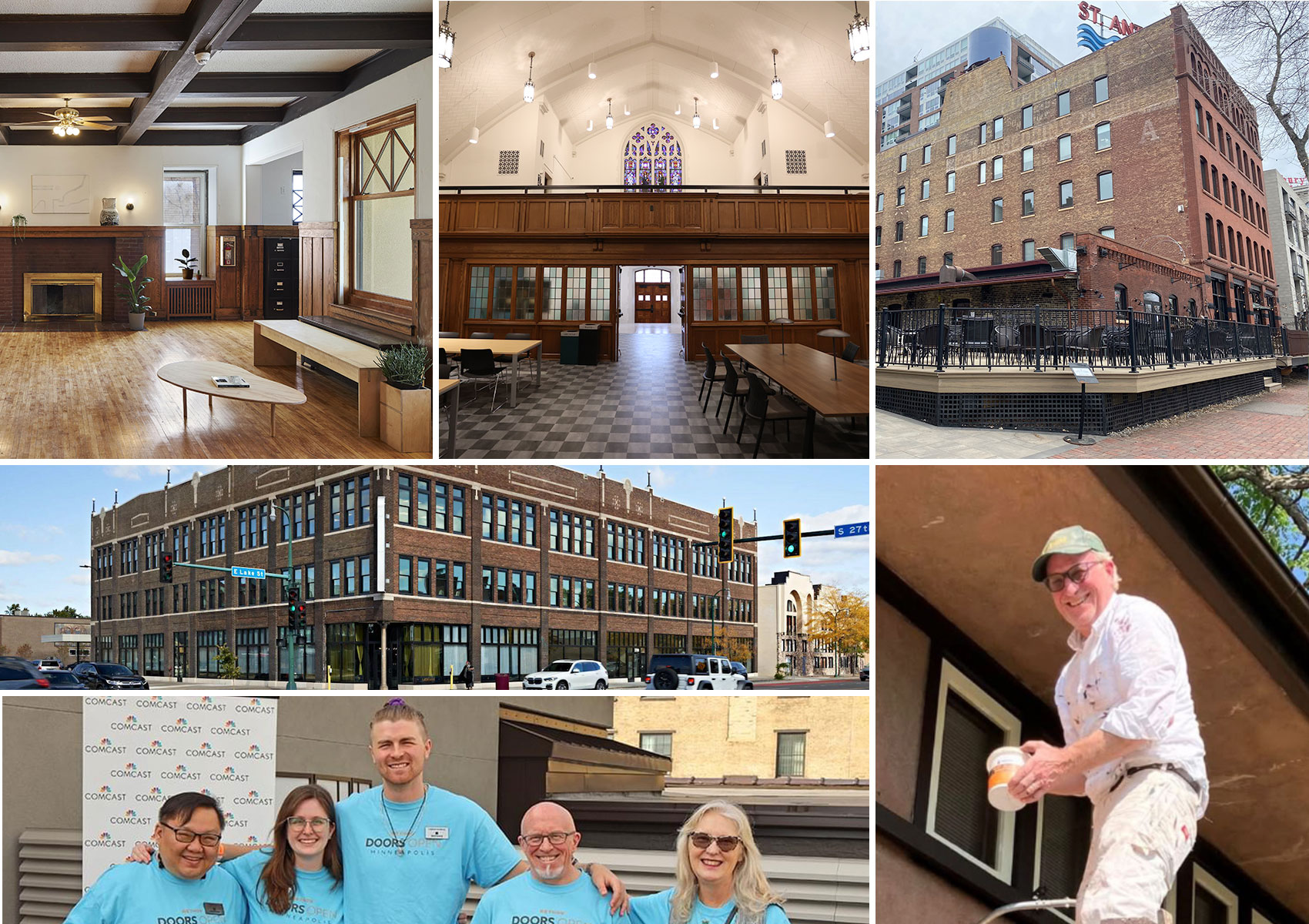The shooting rampage that killed six women of Asian descent in Atlanta last week. 2020’s 150% increase in documented hate crimes against Asian-Americans in major U.S. cities. And, just this past Friday here in St. Paul, children and a grandfather of Hmong descent being subjected to racist comments while waiting for the school bus. This has all brought to the fore America’s long history of bias, discrimination, and violence against Asian people and Asian-Americans.
While the number of Asian and Asian-American members of the AIA is proportional to the population nationally (a little over 5 percent), Minnesota lags considerably – only 1.9% of Minnesota’s AIA members identify as Asian or Asian-American, compared to 4.5% of the Minnesota population. In addition to being underrepresented in architecture, Asian and Asian-American students, architectural designers, and architects have faced discrimination and hate speech. Nearly every Asian-American member of our MN architecture community have shared their personal experiences with anti-Asian bias, hate speech and even hate crimes, with us. These incidents have occurred in their youth, in architecture school, and while serving in the profession of architecture. Assumptions of being born outside the U.S., even if one’s family has lived here for generations. Greater difficulty in job searches. Disparaging and mocking of accents. Assumptions about strengths and weaknesses. Lack of a feeling of belonging and agency within firms, resulting in careers that hit glass ceilings. Members of our architecture community who are Asian-American women have also related stories of objectification – where misogyny and assumptions of subservience have affected their interactions in college and professional settings.
AIA Minnesota stands in solidarity with people of Asian descent. As we do so, we recognize what is ours to do. AIA Minnesota members have the opportunity and responsibility to double down on efforts to create a profession that truly represents and serves all people, with specific attention to people who have been made to feel that they are not welcomed, are not American enough, are “other” – and, as part of this work, to recognize the unique challenges that face Asian and Asian-American people.
The first place to start is individual and organizational self-awareness. What biases do you hold about people of Asian descent? Women of Asian descent? Where do these biases come from? How represented are people of Asian descent in your firm? And what have been the career trajectories of Asian and Asian-American people who have been hired in the past or are current employees? What can you discern from reviewing past performance evaluations? Are there assumptions about skill, leadership potential, and “culture fit” that are revealed and need to be examined?
This is not other people’s work. It is the work of the profession of architecture. We stand with Asian and Asian-American students, designers, and architects at this time of fear, pain, frustration, and anger – and we recommit ourselves to the work of changing the future of this profession for the better.
Anna Pravinata, AIA, NOMA
AIA Minnesota President
Mary-Margaret Zindren
EVP/Executive Director, AIA Minnesota


